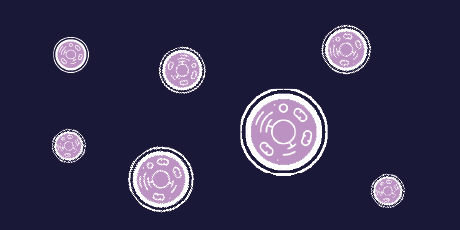Prof. Michelle Lockley from Queen Mary University of London, deposits 6 new cell lines with CancerTools.org
Epithelial ovarian cancer is a heterogeneous disease with five different pathological subtypes, the most common being High Grade Serous Cancer (HGSC). Standard treatment to date for epithelial ovarian cancer has been a combination of surgery and platinum-based chemotherapy. However, approximately 80% of patients relapse and respond less well to successive platinum-containing chemotherapy regimens. Platinum-resistance is defined clinically when relapse occurs within 6months of the most recent platinum treatment. Maintenance treatment with PARP inhibitors dramatically improves progression-free survival in platinum-sensitive disease, but new treatments, including PARP inhibitors, have failed to improve survival in platinum-resistant HGSC.
Prof. Michelle Lockley is a Clinician Scientist based at Barts Cancer Institute, Queen Mary University of London. As a consultant medical oncologist specialising in the systemic treatment of gynaecological cancers, she has particular expertise in ovarian cancer.
Pre-clinical research relies on cell-based disease models, but creating permanent cell lines from human HGSC has proven to be challenging and the extent to which these lines reflect characteristic features of relapsed, human HGSC is largely unknown. As part of her research into epithelial ovarian cancer, Michelle and her team used the OVCAR4, Cov318 and Ovsaho cell lines to generate a unique panel of platinum-resistant, in vitro and in vivo, High-grade serous carcinoma (HGSC) models, that recapitulate the genetic and clinical features of human epithelial ovarian cancer.
To make these cell lines available globally to the wider ovarian cancer research scientific community via CancerTools.org, Michelle deposited the following cell lines:
- IVRO1 Cell Line
- OvsahoCarbo Cell Line
- OV4Cis Cell Line
- OV4Carbo Cell Line
- CovCis Cell Line
- OvsahoCis Cell Line
These cell lines are platinum-resistant HGSC models which:
- share multiple transcriptomic features with relapsed human HGSC
- have evolved diverse in vivo phenotypes reflecting the human disease
- share genetic and transcriptional profiles with platinum-resistant human HGSC
- accurately reproduce the phenotypic diversity seen in patients.
In addition, the infiltrative and metastatic intraperitoneal phenotype produced by Ov4Carbo cells is analogous to the most usual pattern of recurrent, human HGSC.

